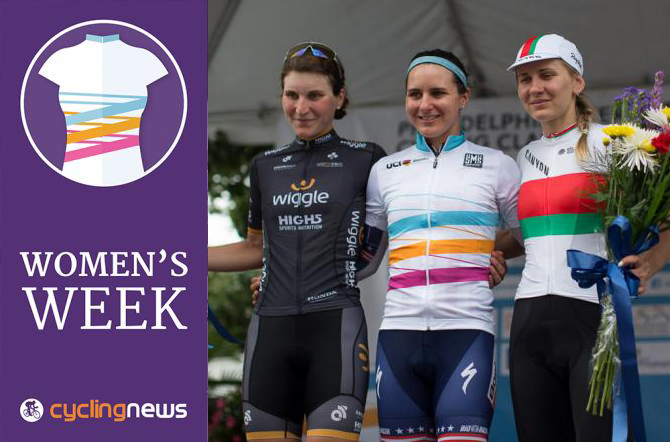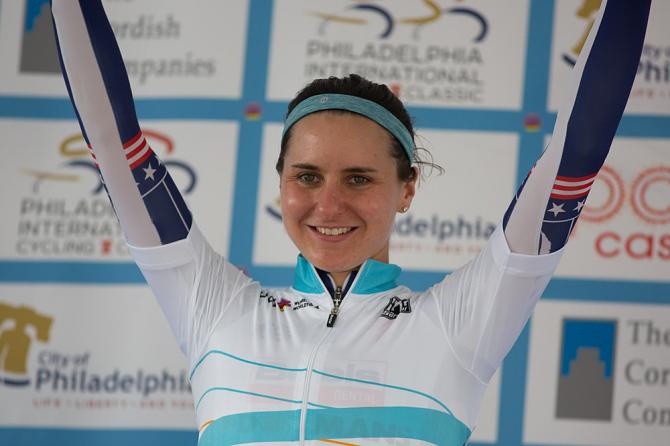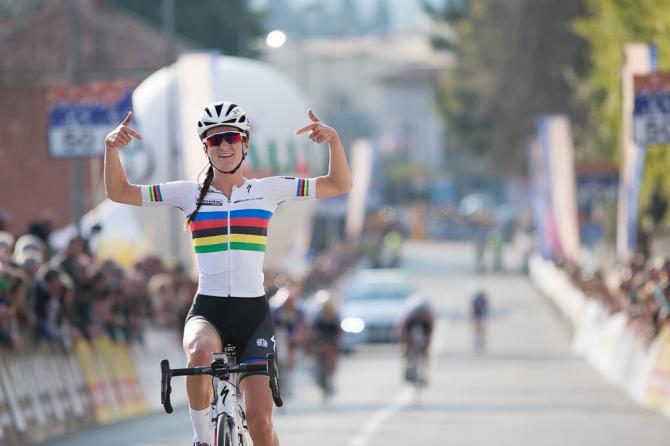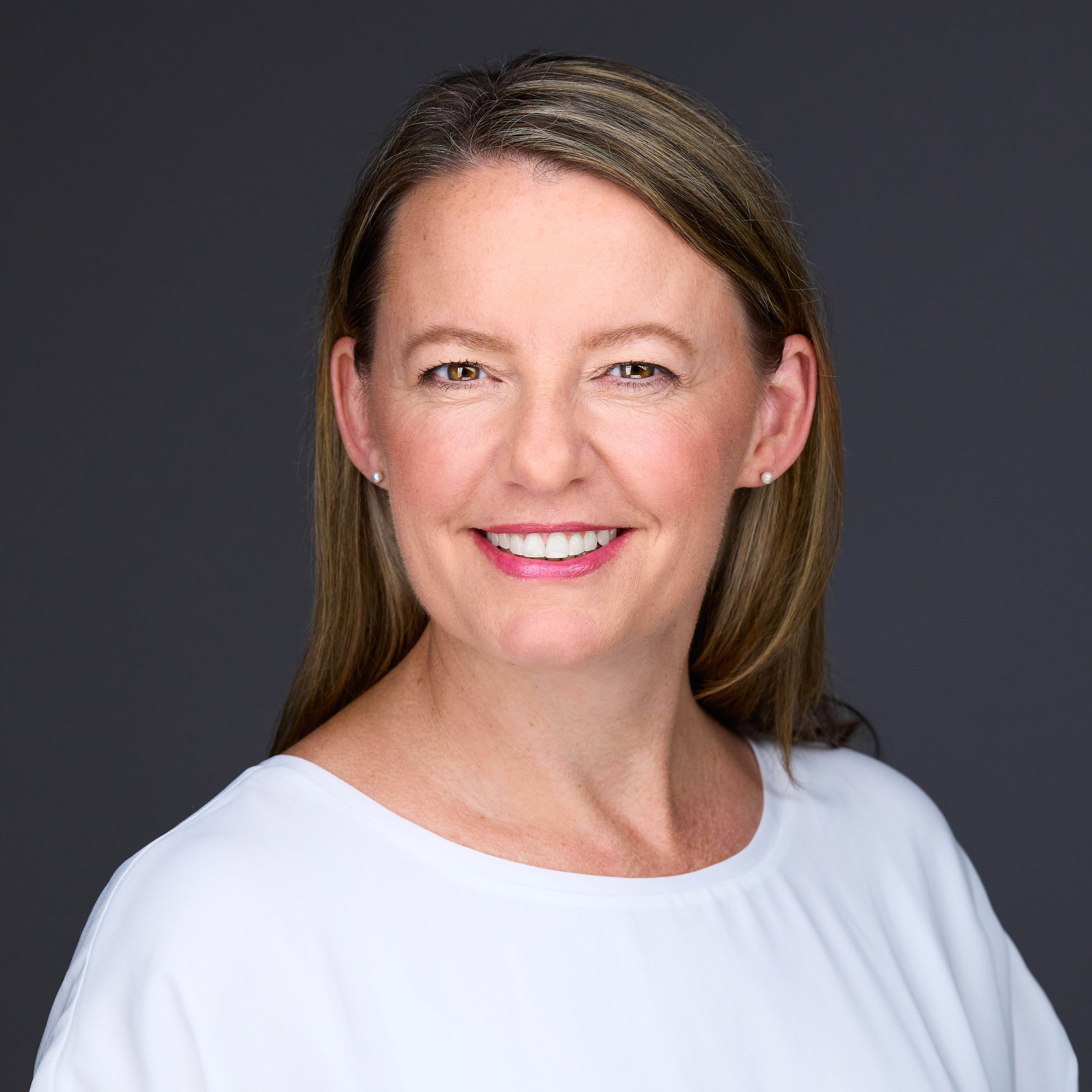Tracey Gaudry Q&A: Half-way point review of the Women's WorldTour
UCI Vice President details what works about the new world-class series and what to expect in the future

Cyclingnews: The new Women's WorldTour has just passed the half-way point. In what ways has the series begun to build a strong narrative around the sport of women's cycling?
The pioneers of women's cycling
Exclusive: All roads lead to Rio Olympics for Marianne Vos
Brennauer looks beyond Aviva Women's Tour to Rio Olympics and Worlds
Ashleigh Moolman-Pasio: Fighting for gender equality and mutual respect
Catching up with the inaugural Women's WorldTour - Gallery
Quiz: Milestones in women's cycling - Can you guess the year?
Tracey Gaudry: Creating a UCI WorldTour for Women was an important milestone to help drive and support the growth of women's races, teams and riders. The number and quality of women's races have been on the increase for several years, however the UCI Cookson administration has been very committed to ensuring this development was accelerated. The UCI Women's WorldTour has been created in order to provide the best teams and riders with even greater opportunities to race in quality, high profile races throughout the whole season. And by doing this, it gives commercial partners, broadcasters and fans the opportunity to be part of, and experience a compelling women's cycling narrative.
CN: Has mixing stage races and one-day races proved to be a good decision for the series, as a replacement of the former World Cup?
TG: The former World Cup was a great series – indeed, I competed in the inaugural Women's Road World Cup Series in 1998 – but it was difficult to create a season-long global narrative with 10-12 one-day races, however great those races were. The UCI Women's WorldTour calendar is composed of 17 races including four stage races; Tour of Chongming Island, Amgen Tour of California, Aviva Women's Tour and the Giro Rosa. There are 10 one-day races from the former Women's World Cup and three new one-day races – a total of 35 days of racing compared to just 10 in the final edition of the World Cup.
One of the strengths of our beautiful sport is its variety – the "pitch" on which our athletes compete changes from race to race, whether from a particular one-day race to another or from a one-day race to a multi-day stage race. The UCI Women's WorldTour has created a compelling narrative, bringing together the top level cycling, celebrating the different identities of each event while giving fans and participants the season-long narrative.
Of course, stage races are themselves a key part of road cycling, another good reason to bring them into the UCI Women's WorldTour and offer riders a comprehensive series enabling the teams' and riders' strengths to come to the fore across the season.

CN: In what ways have you seen improvements in the direct promotion of women's racing? Some of the main objectives of the WWT were to build a bigger media and social media presence for women's cycling by including various highlights packages, event promotion and the new UCI Women's Channel. Is there room for further improvement? Do we now have a premier product that has built a new fan base?
Get The Leadout Newsletter
The latest race content, interviews, features, reviews and expert buying guides, direct to your inbox!
TG: All of the actors in women's road cycling are making great efforts to promote this growing discipline – across event organisers, teams, riders, media, sponsors and fans. Our role at the UCI is partly to use our position at the centre to make sure these efforts are leveraged to their best effect, as well as to generate our own content. We've worked on building the profile of women's cycling and the UCI Women's WorldTour, creating a media and information ‘hub', building a new fan base, and encouraging organisers to grow the promotion of their own events. With "Women's" and "UCI Women's WorldTour" pages on the UCI's website, women's cycling is continuously showcased on these hubs with links to organisers websites, the latest videos, news and a social media feed displaying every update with the hashtag #UCIWWT.
Looking at other sports, it's obvious that developing a clean brand is important to create and sustain awareness, and we've been pleased with the way that participants have embraced the UCI Women's WorldTour brand identity.
The Twitter account @UCIWomensCycling continues to grow and has now more than 16,000 followers. The account provides information on UCI Women's WorldTour and women's cycling across all UCI disciplines. With race updates, photos and videos from organisers, teams and riders, @UCIWomensCycling is the focal point for women's cycling fans around the world.
With riders, Kasia Niewiadoma, Georgia Bronzini and Iris Slappendel for the UCI Women's WorldTour, and Tahnee Seagrave for the Mountain Bike World Cup presented by Shimano, the 'Instagram take-over' has enjoyed a real success. With more than 23, 000 followers, the UCI Women's Cycling Instagram account has doubled its fan base in just three months.
Importantly, after each stage and each race, a 5-10-minute news highlights package is produced by our partner IMG. This clip is available the morning after the race on the UCI YouTube channel (nearly 40 million views and 200,000 subscribers) and all UCI digital platforms. In addition, every two weeks, a special feature on the UCI Women's WorldTour is produced for IMG's InCycle program. With an international distribution, the program is broadcast by more than 35 channels around the world. Additionally, eight portraits of riders, teams and organisers will also be produced throughout the season.
In all, it's an exciting broadcast program promoted by each organisation for the inaugural UCI Women's WorldTour.
CN: Are the stakeholders and the UCI Women's Teams Working Group pleased with the outcome of the Women's WorldTour at the half-way point? Have you received feedback from the Group, riders, teams, and what have they said so far?
The UCI Women's WorldTour has been well received by teams, riders, organisers and media. All parties know that the UCI Women's WorldTour is our biggest opportunity to raise the profile of women's road cycling. We did have a few teething issues at the start as we created a big program and naturally expectations were very high. The momentum, coverage and following have grown throughout the season, and yet this is just the start of our longer-term ambition for the UCI Women's WorldTour.
CN: Based on the first half of the Women's WorldTour, are there any improvements that are needed going forward, can you explain any foreseeable improvements, adjustments or changes? Is the UCI Women's Teams Working Group working on new strategies for the near future of women's bike racing and the Women's WorldTour?
TG: We have planned a Teams Working Group meeting in June after the Aviva Women's Tour to take the next step in the development and professionalism of Women's Road Cycling. Some of the most highly regarded UCI Men's and Women's Team owners and managers will be involved in the planning. This representation speaks volumes about the collaborative approach that UCI has taken with stakeholders in Women's cycling.
The UCI Women's Commission will also review the success of the inaugural UCI Women's WorldTour with a view towards maximising its profile, audience and sustainability. We are excited about how things are progressing.

CN: Is there any discussion of adding new events to the series in 2017, or keeping the calendar the same with 17 events?
Organisers wishing to apply for new events in the 2017 UCI Women's WorldTour had until the 1st of June to do so. There has been strong interest from organisers wishing to join the series. We support the introduction of new events if they fit with the calendar, our global objective and complement the narrative of the series.
TG: Is there discussion of creating a tiered team system in the women's professional category, similar to the men's (WorldTour, Pro Continental, Continental), and what would need to happen to properly create a system like that?
TG: Absolutely. We have a number of work streams and working groups in place to develop a complete system including the Teams Working Group, the Road Calendar Working Group and the Organisers' forum. All aspects are under the spotlight from team and organiser regulations to anti-doping, to marketing and beyond, learning from the men's structure but also taking a fresh approach to the optimum set up to ensure growth and sustainability.
CN: Has there been more discussion about the minimum wage requirement for athlete-team contracts in women's professional racing? There was some pushback from teams due to an expressed inability to afford a minimum wage requirement two years ago, what needs to change to create and implement a minimum wage? Surely, there will be a point when a minimum wage must be implemented to provide female athletes with employment security.
TG: We are determined to improve riders' working conditions while creating an environment that encourages investment in women's road cycling. It is naturally a topic that will be broached by the Teams Working Group as they develop a multi-year plan for the evolution of UCI Women's Road Teams.
CN: Does the Women's WorldTour need additional funding to continue to grow? Where does that funding come from? Who decides on the funding for the Women's WorldTour? How is that decision made? Do you expect funds increase in 2017 and 2018?
TG: The investment comes from the UCI, organisers, teams, sponsors, media and all parties involved in the development of the UCI Women's WorldTour and women's cycling. Investment is growing with the global popularity of the sport, and more teams and more organisers have expressed an interest in women's cycling in the last three years. All the while, the UCI have continued to invest vital funds in the administration, marketing and coverage of the UCI Women's WorldTour to maximise its value to existing and new investors.
CN: Finally, growing the profile and professionalism of women's cycling was one of the election pledges of UCI President Brian Cookson. In your opinion, has the Women's WorldTour, so far, succeeded concerning that pledge? In what ways has it done so, and in what ways has it not?
TG: As I have just shared, we have made enormous inroads into growing the profile of women's cycling – not only on the road, but this review is about the UCI Women's WorldTour - and laying the foundations to ensure that the sport becomes economically strong and sustainable in the years ahead. We now have a brand and a calendar that has strong support from organisers and teams, a narrative, a following and is attracting growing media and investor attention.
We are investing in scholarships for women to become a qualified UCI Directeur Sportif, who will then be in a position to lead and manage UCI Women's WorldTour teams.
We have also connected the teams in the UCI Women's WorldTour to the grand finale of the season, the UCI Road World Championships where the same teams will compete in the Women's Team Time Trial – for exactly the same prize purse as the men!
We – UCI in collaboration with women's cycling stakeholders - are putting women's cycling up on the pedestal and raising that pedestal higher and higher.
Join us for Women's Week on Cyclingnews from June 13-19, and check out the latest race results, news, features, blogs, tech and videos from the women's peloton on our brand new Cyclingnews women's page.

Kirsten Frattini is the Deputy Editor of Cyclingnews, overseeing the global racing content plan.
Kirsten has a background in Kinesiology and Health Science. She has been involved in cycling from the community and grassroots level to professional cycling's biggest races, reporting on the WorldTour, Spring Classics, Tours de France, World Championships and Olympic Games.
She began her sports journalism career with Cyclingnews as a North American Correspondent in 2006. In 2018, Kirsten became Women's Editor – overseeing the content strategy, race coverage and growth of women's professional cycling – before becoming Deputy Editor in 2023.